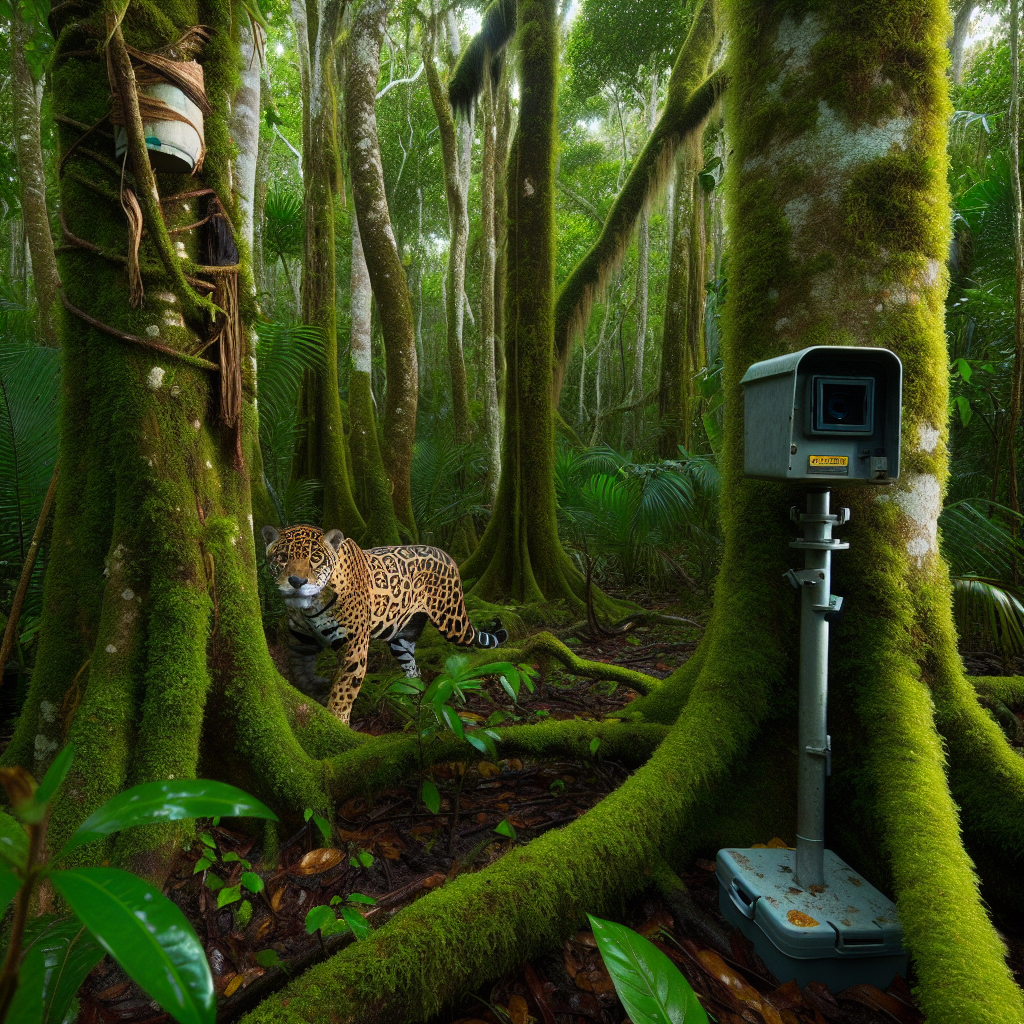Tracking Jaguars: Camera Trap Insights from Tulum
Understanding the Jaguar’s Habitat
The jaguar (Panthera onca), the largest cat in the Americas, inhabits diverse ecosystems, ranging from tropical rainforests to wetlands. In Tulum, Mexico, this majestic predator traverses the lush jungles and coastal regions of the Yucatán Peninsula. The area is characterized by its unique biodiversity, making it a critical habitat for jaguars and countless other species. To study these elusive big cats effectively, researchers use camera traps—an innovative method that provides crucial data on their behavior, movement patterns, and population density.
The Role of Camera Traps in Wildlife Research
Camera traps are portable, motion-activated cameras that capture images or videos of wildlife in their natural habitat. These devices have revolutionized wildlife research by enabling non-invasive monitoring of animal populations. The collected data helps biologists assess jaguar distribution, study their feeding habits, and understand their interactions with other species. In Tulum, a region facing ecological challenges, camera traps play a pivotal role in conservation efforts.
Setting Up Camera Traps
The deployment of camera traps requires strategic planning. Researchers identify high-traffic zones, such as animal trails, water sources, and feeding areas based on prior ecological studies. In Tulum, camera traps are often placed near water bodies, where jaguars frequently hunt for prey, including deer and various aquatic animals. Traps are camouflaged using natural materials, minimizing human disturbance while maximizing the chances of capturing jaguars in action.
Data Collection and Analysis
Once the traps are in place, researchers periodically retrieve the memory cards to assess the captured images. Data analysis involves not only counting the number of jaguar sightings but also documenting their behaviors—such as hunting and mating rituals. The timestamps on the images provide insight into their activity levels during different times of the day and seasons. This detailed analysis forms the foundation of conservation strategies aimed at protecting jaguar populations.
Insights Gained from Tulum’s Camera Traps
Research has unearthed numerous insights into jaguar behavior in Tulum. For instance, jaguars are primarily nocturnal hunters, with peak activity occurring during twilight hours. This behavior impacts their prey’s survival tactics and influences the dynamics of the ecosystem. Additionally, studies have revealed varying social structures among jaguars, with some regions exhibiting solitary behaviors while others show signs of social interactions.
Another significant finding is the use of corridor areas for jaguars to travel between habitats, highlighting the need for safe passageways amid human developments. The monitoring initiatives have shown that jaguars often traverse between protected areas and private lands, emphasizing the importance of community involvement in conservation efforts.
Interaction with Other Species
The camera traps have not only tracked jaguars but also documented their interactions with a plethora of other local wildlife, including peccaries, tapirs, and a variety of bird species. Understanding these interactions is crucial, as they reflect the health of the ecosystem and the role jaguars play as apex predators. Their presence indicates a well-balanced environment; their decline could signal broader ecological issues.
Human Encroachment and Its Effects
As Tulum grows in popularity as a tourist destination, human encroachment poses significant threats to the local wildlife. Deforestation for development disrupts jaguar habitats, leading to fragmented territories and reduced genetic diversity. By using camera traps, researchers have detected shifts in jaguar behavior, with increased sightings near urban areas correlating with habitat loss. This highlights the urgent need for sustainable development practices that consider wildlife conservation alongside human interests.
Community Involvement in Conservation
Effective conservation strategies in Tulum rely heavily on community engagement. Local education programs aim to raise awareness about the vital role jaguars play in the ecosystem and encourage responsible tourism that respects wildlife habitats. Involving local residents in wildlife monitoring initiatives fosters a sense of ownership and responsibility towards conservation efforts. It also ensures the continuation of traditional ecological knowledge, which can complement scientific research.
Future of Jaguar Conservation
The insights gained from camera traps in Tulum are invaluable for shaping conservation strategies. Ongoing research efforts aim to establish wildlife corridors to facilitate jaguar movement, thereby reducing human-animal conflicts and promoting genetic diversity. Collaborations between governmental organizations, NGOs, and local communities are crucial for these initiatives to succeed.
Additionally, technological advancements, such as GPS collaring and drone surveillance, are being integrated into traditional camera trapping methods. This multifaceted approach to conservation not only enhances data collection but also enables real-time monitoring of jaguar movements, providing critical information to intervene when necessary.
Comparative Studies Beyond Tulum
While the focus here is on Tulum, comparative studies in different regions of Central America, such as Belize and Costa Rica, can provide broader insights into jaguar populations and their adaptive behaviors. Analyzing variations in habitat, prey availability, and human interactions across these landscapes helps paint a comprehensive picture of jaguar ecology in the region.
Conclusion
Camera traps in Tulum have proven to be an essential tool for understanding the lives of jaguars. The insights gathered aid in driving effective conservation strategies that not only protect these magnificent cats but also promote the health of the entire ecosystem they inhabit. As efforts continue, the relationship between humans and wildlife in Tulum stands as a testament to what can be achieved when technology, education, and community collaboration come together to ensure a future where jaguars thrive in their natural habitat. Through ongoing research and conservation efforts, the unique interplay between jaguars and their environment can be preserved for generations to come.







